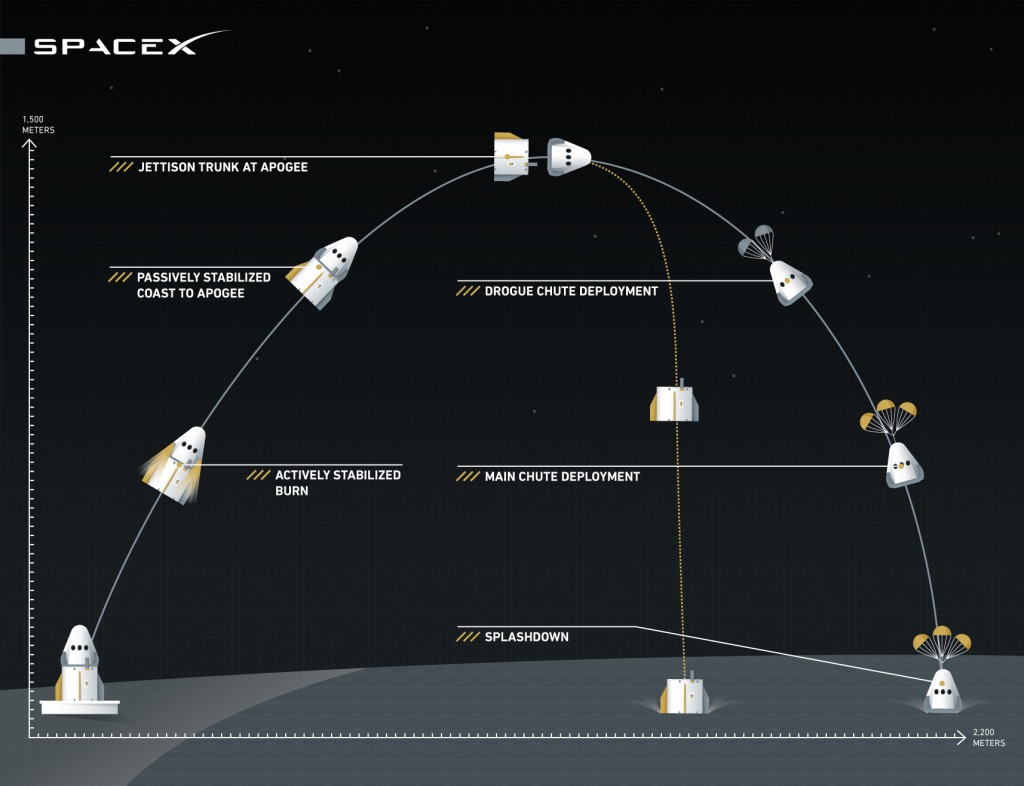During a pad abort test preview last week, engineers with NASA and SpaceX told us what they hope to learn from the demonstration of the company’s escape system. Below are a few more details about the sequence of events and what the test will look like if you’re watching here along Florida’s Space Coast or live on NASA TV on Wednesday, May 6.
The biggest takeaway is that this test will be quick! And that’s the point – SpaceX wants to demonstrate its ability to carry crew members away from a dangerous situation on the launch pad in a hurry. For context, Crew Dragon will accelerate from 0 to nearly 100 mph in one second. The entire test is less than two minutes long, with Dragon traveling over one mile in the first 20 seconds alone.
T-0: The eight SuperDracos ignite simultaneously and reach maximum thrust, propelling the spacecraft off the pad.
T+0.5s: After half a second of vertical flight, Crew Dragon pitches toward the ocean and continues its controlled burn. The SuperDraco engines throttle to control the trajectory based on real-time measurements from the vehicle’s sensors.
T+5s: The abort burn is terminated once all propellant is consumed and Dragon coasts for just over 15 seconds to its highest point about 1500 meters (.93 mi) above the launch pad.
T+21s: The trunk is jettisoned and the spacecraft begins a slow rotation with its heat shield pointed toward the ground again.
T+25s: Small parachutes, called drogues, are deployed first during a 4-6 second window following trunk separation.
T+35s: Once the drogue parachutes stabilize the vehicle, three main parachutes deploy and further slow the spacecraft before splashdown.
T+107s: Dragon splashes down in the Atlantic Ocean about 2,200 meters (1.4 miles) downrange of the launch pad.
SpaceX released images of the spacecraft and a “5 Things to Know” about the pad abort test on its website, which you can read here.


